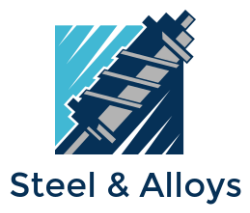Welcome to our dedicated webpage on EN353 steel, a versatile material that finds extensive applications across various industries. In this detailed guide, we'll explore everything you need to know about EN353 steel, from its specifications and chemical composition to its mechanical properties, equivalent grades, applications, heat treatment processes, and available sizes and sections.
Country, Standard, and Specification
EN353 steel is a popular grade in Europe and is primarily governed by European standards. Specifically, it adheres to the EN 10083-3:2006 standard. This standard outlines the technical delivery conditions for alloy steels, specifying the requirements for both chemical composition and mechanical properties.
Chemical Composition
EN353 steel is known for its excellent chemical composition, which includes a blend of essential elements. The typical chemical composition of EN353 steel is as follows:
- Carbon (C): 0.17-0.22%
- Silicon (Si): 0.10-0.40%
- Manganese (Mn): 0.40-0.60%
- Phosphorus (P): ≤0.040%
- Sulfur (S): ≤0.040%
- Chromium (Cr): 0.80-1.10%
This composition imparts impressive mechanical and physical properties to the steel.
Mechanical & Physical Properties
EN353 steel exhibits remarkable mechanical properties that make it suitable for a wide range of applications. Some key mechanical properties include:
- Tensile Strength: 700-850 MPa
- Yield Strength: 450-650 MPa
- Elongation: 16-20%
- Hardness (Brinell): 210-270 HB
In terms of physical properties, EN353 steel boasts excellent durability and resistance to wear and tear, making it an ideal choice for various industrial applications.
Equivalent / Similar Steel Grades
EN353 steel has equivalent or similar grades in various international standards, including:
- BS: 805M20
- AISI/SAE: 8620
- DIN: 21NiCrMo2
- Werkstoff No: 1.6523
- EN (European): 20NiCrMo2-2
- AFNOR: 20NCD2
- JIS: SNCM220
- IS: 20NCD2
- GOST: 20HN3A
These equivalent grades offer flexibility and compatibility in different regions and industries.
Application & Uses
EN353 steel is widely utilized in various applications, including:
- Automotive Industry: Gears, camshafts, and crankshafts.
- Machinery Manufacturing: Bearings, shafts, and structural components.
- Aerospace: Aircraft landing gear components.
- Oil & Gas Industry: Drilling equipment and wellhead components.
The adaptability of EN353 steel makes it a preferred choice for manufacturing critical components in demanding environments.
Heat Treatment Process
EN353 steel is often subjected to heat treatment processes to enhance its mechanical properties. The typical heat treatment for EN353 steel includes quenching and tempering, which provides improved hardness, toughness, and resistance to wear.
Size Ranges & Sections Available
EN353 steel is available in various forms, including:
- Round Bars: Diameter ranging from 12mm to 150mm.
- Flat Bars: Thickness varying from 5mm to 50mm, width up to 200mm.
- Plates: Thickness starting from 2mm.
- Blocks: Custom sizes can be manufactured according to specific requirements.
EN353 steel is accessible in multiple conditions, such as annealed, normalized, or as-rolled, catering to diverse applications.
In summary, EN353 steel is a versatile and high-quality material that meets international standards and specifications. Its impressive chemical composition, mechanical properties, equivalent grades, and diverse applications make it a preferred choice in various industries. Whether you're in automotive, machinery manufacturing, aerospace, or the oil and gas sector, EN353 steel offers the performance and reliability you need. With the right heat treatment and a wide range of available sizes and sections, EN353 steel is ready to meet your specific needs.
